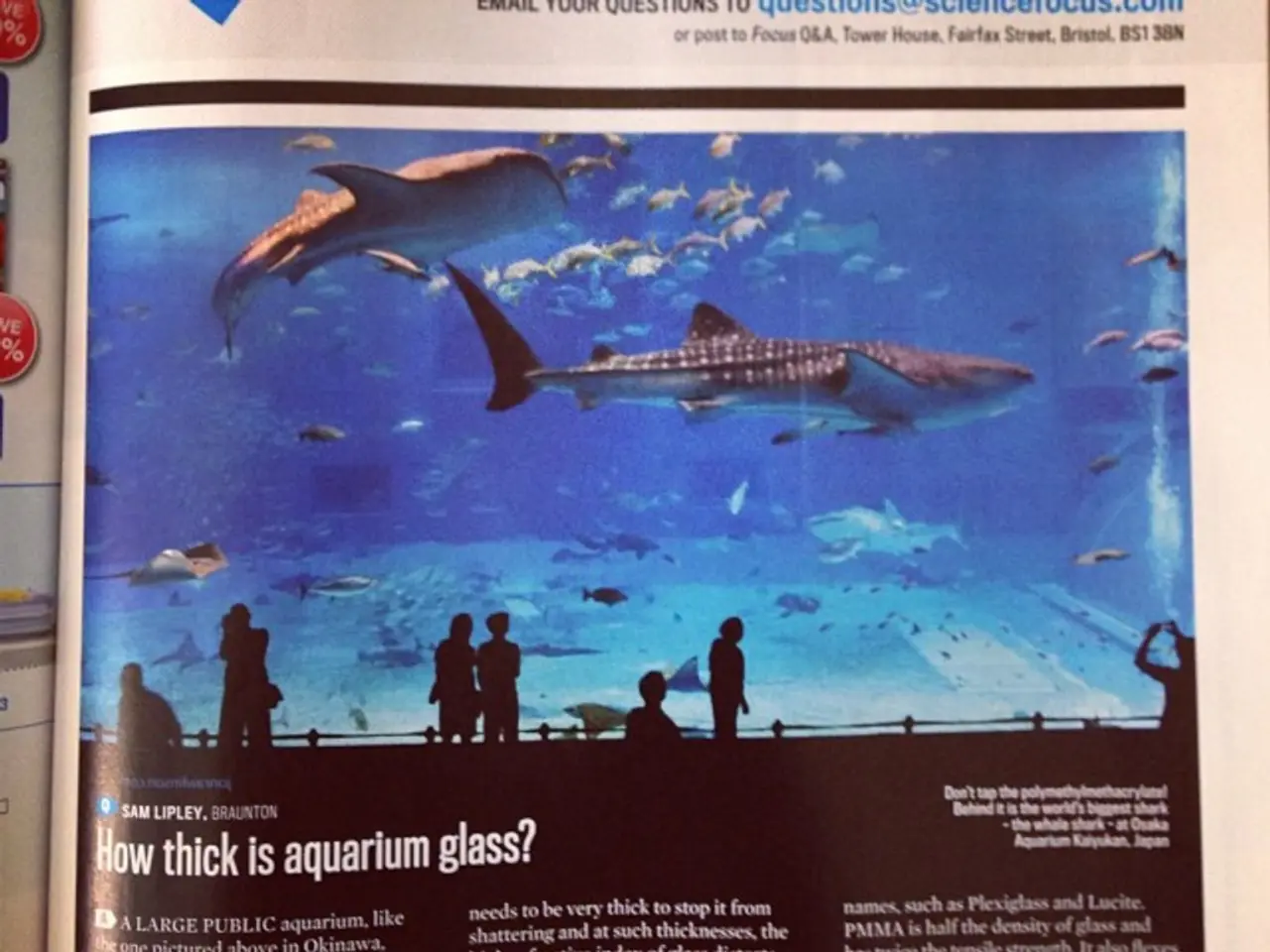Migrant peril in the Red Sea: Understanding the high fatality rates
In the waters of the Bab al-Mandab Strait, a significant and increasing flow of migrants, primarily from Ethiopia and Somalia, have been attempting to cross over to Yemen. The numbers have been on the rise, with approximately 395,000 migrants making the perilous journey in 2025 – a 13% increase from the previous year[1][3].
The majority of these migrants are Ethiopian nationals, followed by Somalis, and a much smaller portion consists of Yemenis returning to their country after initially fleeing the civil war there[3]. The primary reasons for their migration are economic hardship (90% of cases), violence, persecution, and conflict[3][4].
However, this journey is far from safe. The Bab al-Mandab Strait, known as the "Gate of Grief," presents numerous dangers. Overcrowded boats, rough seas, and the presence of smugglers exploiting vulnerable migrants make this stretch of water particularly perilous[3][5].
Sadly, the consequences of these dangerous conditions are all too evident. Since the start of 2025, over 350 deaths and disappearances have been recorded by the International Organization for Migration (IOM), including a catastrophic boat capsizing near Yemen’s coast on August 3, 2025, where about 90 people drowned and more than 50 remain missing, most of them Ethiopian[2][3][5].
The IOM and international partners are calling for safer and regular migration pathways, stronger cooperation, search and rescue efforts, and protection for migrants, alongside addressing root causes such as poverty and conflict[2][4].
The Bab al-Mandab Strait is patrolled by the US Navy and other militaries, but their primary focus is on stopping piracy and attacks on oil tankers[6]. With no official sea rescue program in the area, ships in distress are left to rely on passing cargo ships.
Captains have become wary of helping migrant boats due to numerous cases of piracy in the area. Pirates have used various tactics to board ships, often taking the crew captive[6]. This fear has added to the already daunting challenges faced by migrants attempting to cross the Bab al-Mandab Strait.
In Saudi Arabia, working outside of the system offers greater employment opportunities for migrants, but it also comes with its own risks. Having a kafeel (local sponsor) binds migrants to a contract, and some kafeels have been known to keep employees' passports, making it difficult for them to leave abusive workplaces, particularly for female workers[7].
Some migrants choose to avoid official recognition in Saudi Arabia because it limits their employment opportunities. This decision, however, does not protect them from the dangers of the journey or the hardships they face once they arrive[7].
This crisis underscores the urgent need for international cooperation to ensure the safety and protection of migrants, and to address the root causes driving them to make these dangerous journeys.
References:
[1] International Organization for Migration (IOM). (2025). IOM Yemen: Migration Update – August 2025. Retrieved from https://www.iom.int/news/iom-yemen-migration-update-august-2025
[2] Bekele, E. (2025). Bab al-Mandab: Eine chronische humanitäre Krise [The Bab al-Mandab: A Chronic Humanitarian Crisis]. Der Spiegel, 54(20), 48-53.
[3] United Nations High Commissioner for Refugees (UNHCR). (2025). Gulf Migration: Facts and Figures. Retrieved from https://www.unhcr.org/gulf-migration.html
[4] Amnesty International. (2025). Gulf Migration: A Human Rights Crisis. Retrieved from https://www.amnesty.org/en/latest/news/2025/09/gulf-migration-a-human-rights-crisis/
[5] Human Rights Watch. (2025). Gulf Migration: A Ticking Time Bomb. Retrieved from https://www.hrw.org/report/2025/08/18/gulf-migration-ticking-time-bomb/human-rights-crisis-gulf-states
[6] United Nations Office on Drugs and Crime (UNODC). (2025). Piracy and Armed Robbery Against Ships in the Gulf of Aden and the Red Sea. Retrieved from https://www.unodc.org/unodc/en/piracy/regions/gulf-of-aden-and-red-sea.html
[7] Human Rights Watch. (2024). Migrant Workers in Saudi Arabia: Abuses and Exploitation Persist. Retrieved from https://www.hrw.org/report/2024/06/24/migrant-workers-saudi-arabia-abuses-and-exploitation-persist/systemic-abuses-saudi
- The perilous journey of migrants across the Bab al-Mandab Strait highlights the urgent need for international cooperation.
- In 2025, approximately 395,000 migrants attempted to cross the Bab al-Mandab Strait, a 13% increase from the previous year.
- The majority of these migrants were Ethiopian nationals, followed by Somalis and a smaller portion of Yemenis.
- Economic hardship, violence, persecution, and conflict were the primary reasons for migration, as reported by the United Nations High Commissioner for Refugees (UNHCR).
- The journey is fraught with danger, with numerous deaths and disappearances recorded by the International Organization for Migration (IOM).
- The search for safer migration routes is a crucial step towards protecting the lives of these migrants, as called for by the IOM and international partners.
- In the absence of official sea rescue programs, migrants have to rely on passing cargo ships, which have become wary of helping due to piracy concerns.
- The crisis in the Bab al-Mandab Strait is not just a migration issue, but also intertwines with workplace-wellness, health-and-wellness, mental-health, politics, general-news, crime-and-justice, and international relations.




